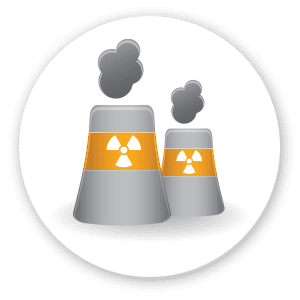

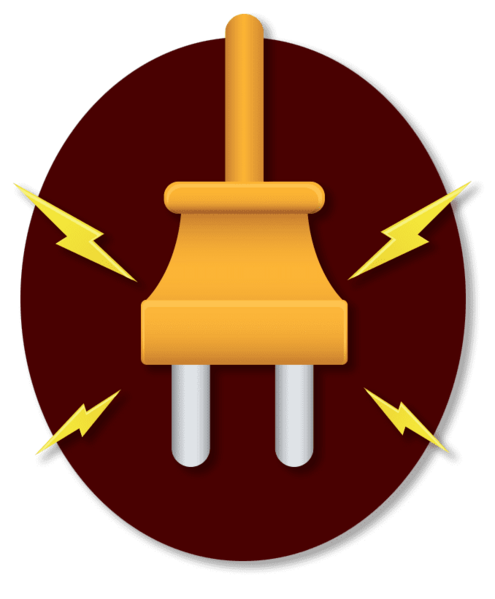
We use energy every day: when we ride in a car or bus, turn on the TV, and even when we take a hot shower.
Today, there are over 6 billion people living around the world. That's 6,000,000,000 people! And we're using a lot of energy.
Most of the energy comes from burning fossil fuels, like coal and oil. This releases carbon dioxide (CO2) into the atmosphere.
As CO2 levels rise, Earth's temperatures rise too!
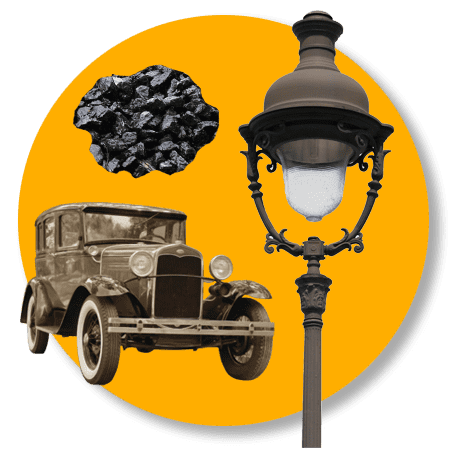
How has using fossil fuels changed our world? Explore the graph below that tells the story of rising CO2.
- Notice the connections over time between 3 sets of data (carbon dioxide, people, money).
- Try the quiz questions to see what you know about technology through the years.
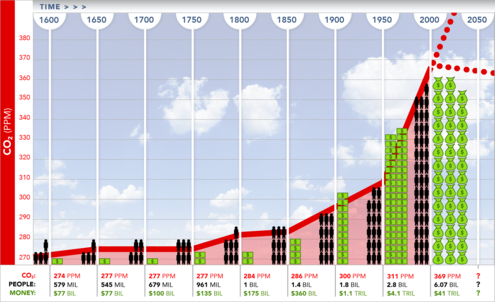
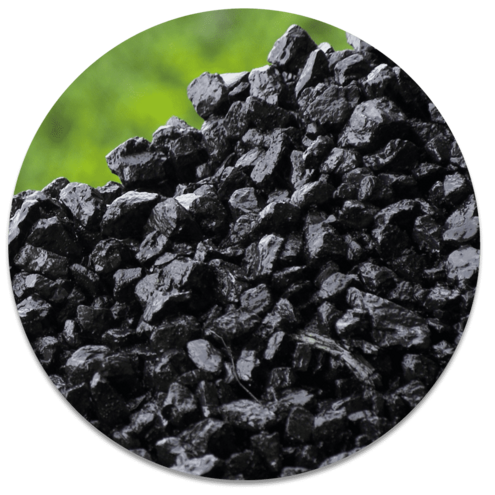
EARLY 1600s
The Rock That Burns
Coal started to replace wood as a common fuel. Coal was plentiful and produced more heat than wood. But its soot thickened city air with smoke and coated the insides of houses.
Burning coal releases carbon dioxide into the atmosphere?
FACT
FICTION
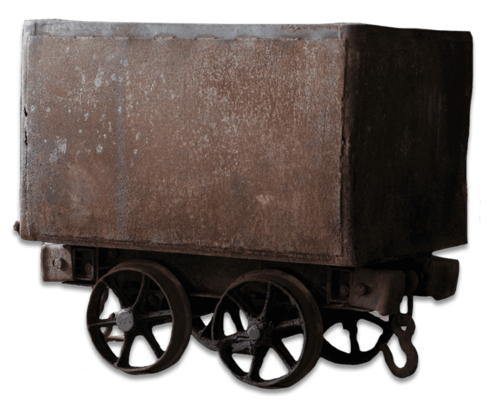
LATE 1600s
Coal for Heat
At first, people burned the coal they found at Earth's surface. By the late 1600s, miners were digging as deep as 50 meters (165 feet) in search of coal. More and more coal was collected and burned.
After people started building coal mines, they stopped mining coal from Earth's surface.
FACT
FICTION
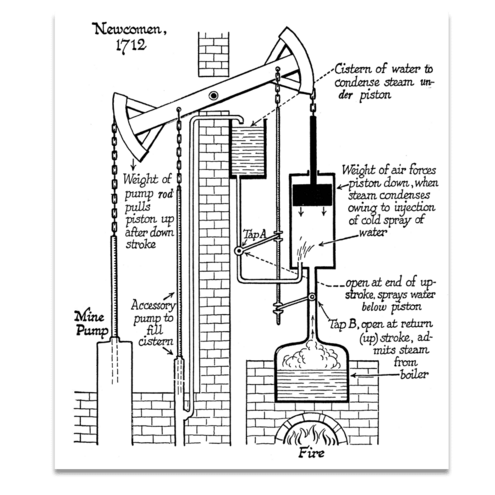
EARLY 1700s
Steam Engine Puts Coal to Work
In 1712, Thomas Newcomen invented a new machine that burned coal to heat water. It then used the steam from the hot water to power an engine. One steam engine could do the work of many men. Its first job was to pump water from deep coal mines.
When coal is burned, it releases steam.
FACT
FICTION
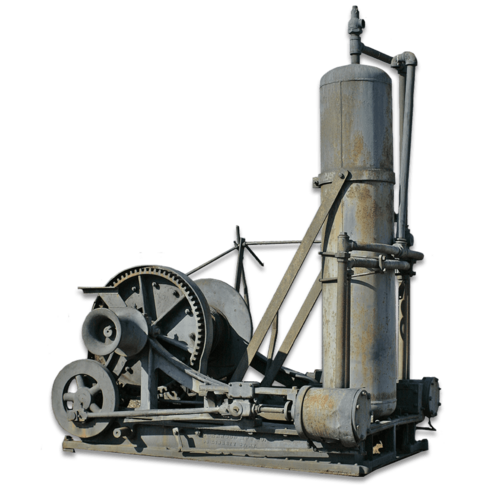
LATE 1700s
Coal Goes Farther
James Watt and other scientists improved the steam engine. By the late 1700s, steam engines were using half the coal and generating at least twice the power of the original design.
Watt's steam engine was used to power large ships and trains.
FACT
FICTION
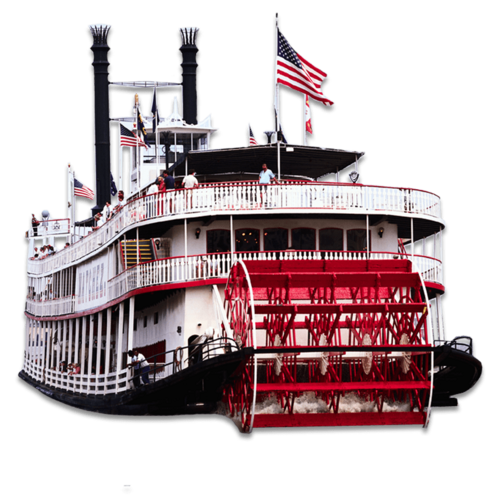
EARLY 1800s
Coal & Transportation
With the invention of boilers that could hold steam under high pressure, steam engines were more powerful than ever. Before long, coal was used to power heavy trains, steamboats, and ships.
Steam engines are no longer widely used for transportation.
FACT
FICTION

LATE 1800s
Let There Be Light
With his invention of the light bulb, Thomas Edison sparked a new need—electricity. In 1882, he began supplying New York City customers with electricity from a coal-fired plant. These first power plants were built near customers.
Most people had electricity in their homes soon after the light bulb was invented.
FACT
FICTION
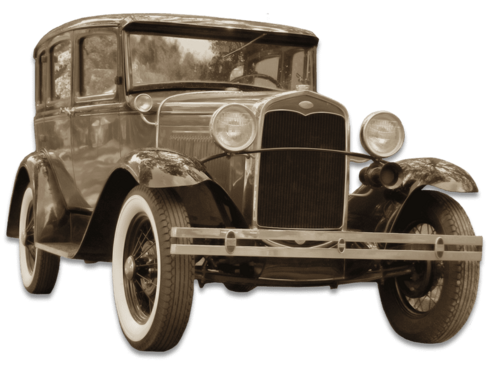
EARLY 1900s
The World Gets Wheels
After the turn of the century, the invention of the automobile changed American lives forever. Ford introduced the Model T in 1908, and was selling 500,000 a year by 1915. Oil became the fuel of choice for most vehicles. But the end of the century, there would be more than 700 million vehicles on the road worldwide.
Today, most cars run on oil.
FACT
FICTION
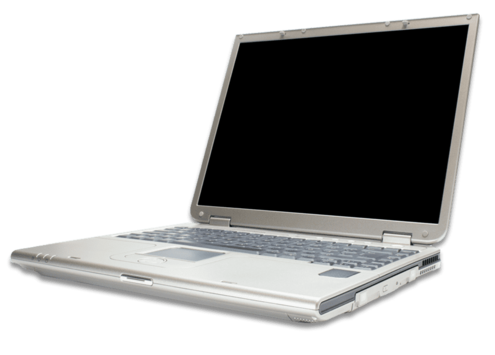
LATE 1900s
Information Revolution
Personal computers changed the way we live, work, and communicate. With over a billion home computers in use worldwide, the demand for electricity kept growing.
Most people in the world have a computer in their homes.
FACT
FICTION
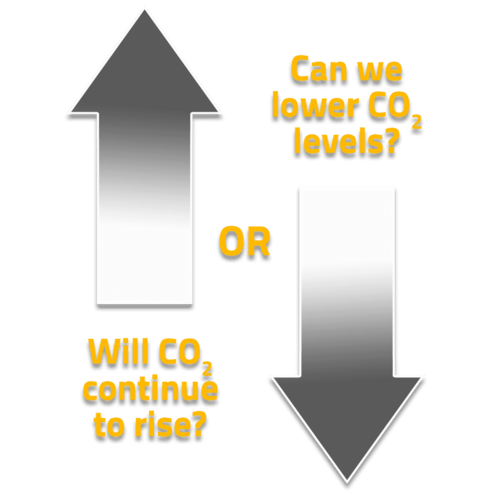
BEYOND 2000
Two Paths, Two Futures
What will CO2 levels be in the future? We don't know for sure. If we continue "business as usual," worldwide CO2 emissions will rise to new highs. But, if we make new energy choices, we may be able to lower CO2 emissions and slow climate change.
As the world population grows, there is nothing we can do to stop CO2 levels from rising as well.
FACT
FICTION
KEY TO THE GRAPH
= Carbon dioxide in the atmosphere is measured in parts per million (ppm): the number of C02 molecules in one million molecules of air
AMOUNT OF PEOPLE IN THE WORLD
= 150 million people (150,000,000)
AMOUNT OF MONEY IN THE WORLD
= $100 Billion ($100,000,000,000)
= $1 Trillion ($1,000,000,000,000)
= 10 x
![]()
No single solution is enough. But together, our actions can make a difference!
Switch to "Clean" Energy
As the world's energy needs grow, communities and countries must take even bigger steps to reduce greenhouse gas emissions. Most of all, we need to switch from fossil fuels to other sources of energy that produce few or no CO2.
Take Individual Actions
One person's actions can make a huge difference — if millions of people do it. Find out how you can save energy!
Image Credits:
plug icon, solar panel icon, wind turbine icon, water icon, earth icon, nuclear reactor icon, coal and vintage car © istockphoto.com; carbon capture icon, © AMNH; steam engine, mine car, lamp post, computer, © Shutterstock; steamboat, © CORBIS; Newcomen steam engine illustration




 Biodiversity
Biodiversity
 Brain
Brain
 Genetics
Genetics
 Marine BiOLogy
Marine BiOLogy
 MicrobiOLogy
MicrobiOLogy
 PaleontOLogy
PaleontOLogy
 ZoOLogy
ZoOLogy
 AnthropOLogy
AnthropOLogy
 ArchaeOLogy
ArchaeOLogy
 Astronomy
Astronomy
 Climate Change
Climate Change
 Earth
Earth
 Physics
Physics
 Water
Water





